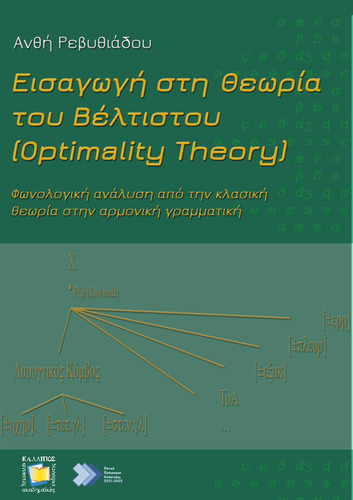| Title Details: | |
|
Introduction to Optimality Theory |
|
| Other Titles: |
Phonological Analysis from Classical Theory to Harmonic Grammar |
| Authors: |
Revythiadou, Anthi |
| Subject: | HUMANITIES AND ARTS > LINGUISTICS > STRUCTURE OF LANGUAGE > PHONOLOGY HUMANITIES AND ARTS > LINGUISTICS > STRUCTURE OF LANGUAGE > MORHOLOGY HUMANITIES AND ARTS > LINGUISTICS > STRUCTURE OF LANGUAGE > GRAMMAR |
| Keywords: |
Optimality Theory
Constraint Hierarchy Evaluation Input Output Markedness constraint Faithfulness constraint Indexed constraint Morphophonology Neutralization Allophonic relation Prosodic Phonology and Morphology Generalized Alignment Language acquisition Constraint promotion Constraint demotion Harmonic Grammar Gradient Harmonic Grammar Maximum Entropy Grammar Gradual Learning Algorithm Noisy Harmonic Grammar |
| Description: | |
| Abstract: |
The main objective of this textbook is to acquaint undergraduate and postgraduate students of linguistics with the theoretical model of Optimality Theory, broadly known as OT. It is a model of phonological analysis originally proposed by Prince and Smolensky within the framework of Generative Linguistics (Chomsky, 1957) in an extensive scientific report circulated in 1993. The present book consists of eight chapters and is structured as follows: Chapter 1 presents the basic concepts and principles of OT and develops in detail an example of phonological analysis couched within the OT framework. Chapter 2 focuses on three important problems that have attracted and continue to attract the interest of phonological research and the answers / solutions offered by OT. Chapter 3 examines how OT analyzes phonological contrasts, allophonic relations and neutralization processes through the reordering of markedness and faithfulness constraints. Chapters 4 and 5 deal with processes that lie at the heart of phonology-morphology interface. More specifically, Chapter 4 presents the constraints of Generalized Alignment and examines their role in infixation and templatic morphology, whereas Chapter 5 explores how reduplicative processes are analyzed within OT. The subject matter of Chapter 6 is language acquisition from the perspective of OT. Since children’s productions at the beginning of acquisition are characterized by unmarked sounds and structures, the ranking of faithfulness and markedness constraints in such early grammars should be MARKEDNESS ≫ FAITHFULNESS. However, children’s grammars evolve via constraint re-ordering, so that gradually more complex structures emerge. Each reordering corresponds to intermediate grammars which together form the developmental path that young speakers follow in order to acquire their target language. Chapter 7 focuses on the analysis of phenomena of phonological variation (e.g., τρέχουν vs. τρέχουνε ‘they run’) and gradience (e.g., the cluster φτ [ft] is preferred over φθ [fθ]), as they emerge from experimental research and/or data corpora. The focus of Chapter 8 is on stochastic aspects of OT, such as Stochastic OT and two stochastic versions of Harmonic Grammar, namely Noisy Harmonic Grammar and the Maximum Entropy Model.
|
| Linguistic Editors: |
Kalliaras, Dimitrios |
| Graphic Editors: |
Kokolakis, Antonios |
| Type: |
Undergraduate textbook |
| Creation Date: | 07-06-2023 |
| Item Details: | |
| ISBN |
978-618-5667-78-8 |
| License: |
Attribution - NonCommercial - ShareAlike 4.0 International (CC BY-NC-SA 4.0) |
| DOI | http://dx.doi.org/10.57713/kallipos-117 |
| Handle | http://hdl.handle.net/11419/8617 |
| Bibliographic Reference: | Revythiadou, A. (2023). Introduction to Optimality Theory [Undergraduate textbook]. Kallipos, Open Academic Editions. https://dx.doi.org/10.57713/kallipos-117 |
| Language: |
Greek |
| Consists of: |
1. Basic concepts and principles of Optimality Theory (OT) 2. Phonological problems and OT 3. Indexed constraints 4. Prosodic morphology in OT: Generalized Alignment 5. Prosodic morphology in OT: Base-Reduplicant Correspondence Theory 6. OT and language acquisition 7. Phonological gradience and variation in OT 8. Stochastic Grammars |
| Number of pages |
256 |
| Publication Origin: |
Kallipos, Open Academic Editions |
| You can also view | |
| User comments | |
There are no published comments available! | |

